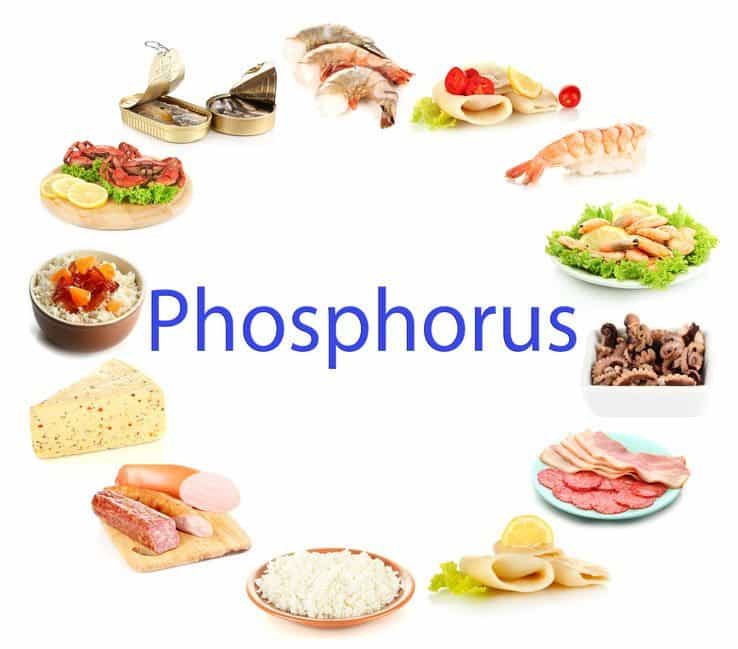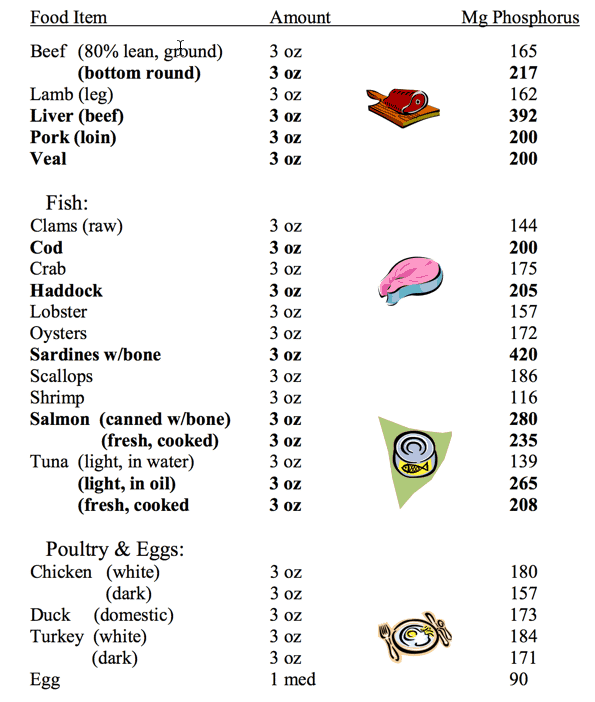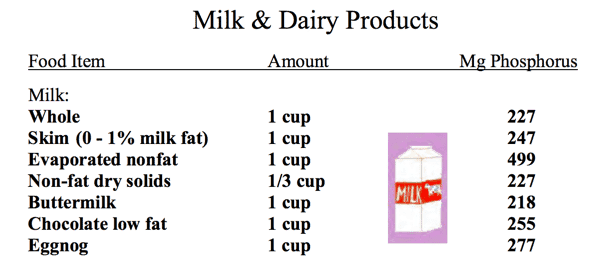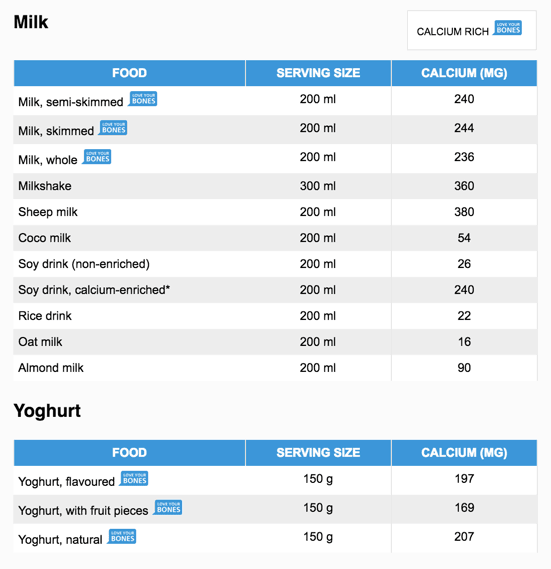
[cmamad id=”3475″ align=”center” tabid=”display-desktop” mobid=”display-desktop” stg=””]
The medical establishment has a very poor understanding of phosphorus.
Phosphorus and calcium compete in the body.
Bones consist of calcium and phosphorus both.
But most of us have diets far too high in phosphorus and far too low in calcium.
These imbalances can lead to many problems.
And most of us are not getting enough calcium to offset the phosphorus.
Are you suffering from excess phosphorus in your diet?
In this study, they looked at the effects of high phosphorus and low calcium diets.
 The researchers found that of low calcium and high phosphorus lead to high amounts of parathyroid hormone.
The researchers found that of low calcium and high phosphorus lead to high amounts of parathyroid hormone.
Parathyroid hormone comes from a set of glands in your neck that sit on top of your thyroid.
Its job is to help in regulating the calcium in our body.
As this study shows, you do not want high levels of parathyroid hormone in your body.
Which you want is low amounts of parathyroid hormone in the body.
And here’s the punchline.
It’s not how much calcium the participants in the study consumed.
It was how much phosphorus they got.
[cmamad id=”3476″ align=”center” tabid=”display-desktop” mobid=”display-desktop” stg=””]
Higher phosphorus levels created high levels of dangerous parathyroid hormone.
And it happened even when the women in the study consumed enough calcium:
Low habitual dietary Ca:P ratios interfered with Calcium metabolism in healthy women with an adequate dietary Calcium intake
What that means in plain English is,
It’s not how much calcium you’re consuming — it’s the ratio of calcium to phosphorus.
You want more calcium and phosphorus.
Here’s why.
First of all, parathyroid hormone results in blood sugar problems, aka diabetes.

The results indicate that excess parathyroid hormone interferes with the ability of the pancreas bete cells to augment insulin secretion appropriately in response to the insulin-resistant state.
So high parathyroid hormone can create a diabetic situation.
And it confirms a suspected relationship between phosphorus and the need for dialysis later on.
But it gets worse.
High parathyroid hormone levels also can lead to bladder stones and kidney stones.
If you have a susceptibility to kidney stones or bladder stones, you should be sure to lower your phosphorus intake.
You should also raise your calcium intake.
And, too much phosphate in your diet may increase your chances of getting cancer.

Elevated concentrations of phosphate increased cell proliferation and expression of pro-tumor genes.
In fact, high phosphorus increased the number of skin problems dramatically.
And high levels of phosphorus appear to contribute to cancer.
These are some of the many reasons to increase your calcium intake and lower your phosphorus intake.
As they conclude in the first study:
In Western diets, dairy products consumption will easily ensure adequate Calcium intake. High dietary Phosphorus intake, in turn, will be reduced by restricting the consumption of
highly processed foods and increasing the consumption of raw and unprocessed foods.
So let me now conclude this newsletter by exploring some calcium and phosphorus food sources in your diet.
Foods highest in phosphorus and lowest in calcium should be restricted.
Grains are very high in phosphorus and very low in calcium:
 Meat and fish are high in phosphorus and low in calcium.
Meat and fish are high in phosphorus and low in calcium.
 Milk products are high in phosphorus but also high in calcium — they are the best source of high calcium.
Milk products are high in phosphorus but also high in calcium — they are the best source of high calcium.
 Now look at the calcium content of milk.
Now look at the calcium content of milk.
 Here’s what you should do now.
Here’s what you should do now.
Reduce your intake of grains and meat and fish.
You should also increase your intake of high calcium foods.
Eat foods like dairy products, as well as leafy greens such as kale.
These are sources of good quality metabolizable calcium in a ratio to phosphorus that is healthy in the long run.
This ratio is best for controlling and lowering parathyroid hormone.
It helps in maintaining strong bones, preventing kidney and bladder stones — and lowering the chances of getting cancer.

http://journals.cambridge.org/download.php?file=%2FBJN%2FBJN103_04%2FS0007114509992121a.pdf&code=78fa7ac33ee0d95e08c095f29250a990
Phosphorus content of common foods
http://www.pittsburgh.va.gov/Dialysis/docs/PhosphorusContentinFoods.pdf
Calcium content of common foods
https://www.iofbonehealth.org/osteoporosis-musculoskeletal-disorders/osteoporosis/prevention/calcium/calcium-content-common-foods
Role of Parathyroid Hormone in the Glucose Intolerance of Chronic Renal Failure
http://www.ncbi.nlm.nih.gov/pmc/articles/PMC423657/pdf/jcinvest00120-0271.pdf
Elevated Phosphate Activates N-ras and Promotes Cell Transformation and Skin Tumorigenesis
http://cancerpreventionresearch.aacrjournals.org/content/3/3/359.long
